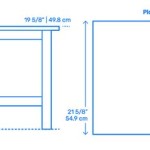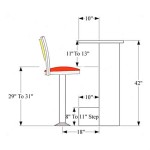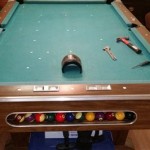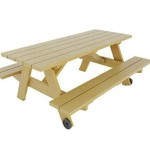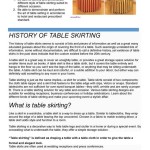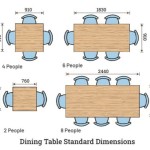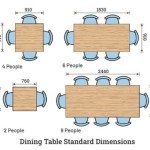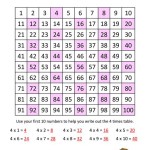What Are The Dimensions of a Standard Pool Table?
The dimensions of a standard pool table are a critical factor influencing gameplay, strategy, and overall enjoyment of the game. Understanding these dimensions, which encompass the playing surface size, table height, rail height, and even cushion characteristics, is essential for both casual players and serious enthusiasts. This knowledge helps in selecting the right table for a particular space, optimizing playing techniques, and appreciating the nuances of the game.
Pool tables, also commonly referred to as billiard tables, are not all created equal. They come in various sizes, each designed for specific playing environments and game variations. While smaller tables are suitable for home use or recreational settings, regulation-size tables are typically found in professional billiard halls and used in competitive tournaments. The specific dimensions are governed by organizations such as the World Pool-Billiard Association (WPA), ensuring standardization and fair play in competitive settings.
The term "standard" itself can be somewhat ambiguous, as it often refers to the regulation size used for professional pool. However, various other sizes are also prevalent and considered "standard" within different contexts. This article will delve into the dimensions of the most common pool table sizes, outlining the key characteristics that distinguish them and their suitability for different environments and playing styles.
The primary dimension to consider is the playing surface, which is the area enclosed by the cushions where the balls are struck. This is typically measured in feet and is expressed as a ratio of length to width. The most common sizes are 7-foot, 8-foot, and 9-foot tables. The height of the table, measured from the floor to the top of the playing surface, is also a crucial dimension affecting player comfort and stance. Additionally, the height and profile of the cushions, along with the rail height, contribute to the ball's rebound and trajectory. This creates a consistent and predictable playing experience.
Understanding these dimensions is not just about adhering to regulations; it also impacts the overall experience of playing pool. The size of the table affects the difficulty of the game, the types of shots that can be attempted, and the strategic considerations that come into play. Therefore, choosing the right size is paramount to matching the playing environment and the skill level of the players.
The Playing Surface: Size and Shape
The playing surface of a pool table is typically rectangular, with the length being twice the width. This ratio is a fundamental aspect of pool table design, influencing the geometry of the game and the strategic options available to players. The playing surface is defined as the area within the cushions, also known as the rails. The dimensions of this area are crucial for determining the table size designation (e.g., 7-foot, 8-foot, 9-foot).
A 7-foot table, often called a "bar box," generally has a playing surface of 39 inches by 78 inches. This size is commonly found in bars and smaller recreational spaces due to its compact footprint. An 8-foot table, a popular choice for home use, has a playing surface of 44 inches by 88 inches. The 9-foot table, the standard size for professional tournaments, measures 50 inches by 100 inches. These dimensions are approximate and can vary slightly depending on the manufacturer and specific model.
The accuracy of these dimensions is paramount. Even small deviations can significantly affect ball behavior and the consistency of play. Professional-grade tables adhere to strict tolerances to ensure a fair and predictable playing experience. This accuracy is achieved through precise manufacturing techniques and meticulous quality control. The playing surface itself is typically made of slate, a dense and durable material that provides a perfectly flat and stable base.
Slate is the preferred material for the playing surface due to its inherent properties. It resists warping and maintains its flatness over long periods, ensuring consistent ball roll. The slate is usually covered with a felt cloth, also known as baize, which provides a smooth surface for the balls to glide across. The type and quality of the cloth can also impact ball speed and spin, adding another layer of complexity to the game. Thicker cloths tend to slow down the balls more than thinner cloths, while certain weaves can affect the amount of spin imparted on the cue ball.
In addition to the overall size, the shape of the playing surface is critical. The corners and side pockets must be precisely cut to ensure consistent ball capture. The angle and depth of the pockets influence the likelihood of a ball dropping and contribute to the strategic element of aiming. Irregularly shaped or poorly positioned pockets can create unpredictable bounces and frustrate players.
Table Height and Rail Considerations
The height of a pool table is measured from the floor to the top of the playing surface, excluding the cushions. The standard height for a pool table is generally between 29.25 inches and 31 inches. This height is designed to provide a comfortable playing stance for most adults, allowing them to reach over the table without straining or compromising their posture. The height affects the player's ability to align shots accurately and maintain a stable stance during the game.
The rails, also known as cushions, are the elastic borders that surround the playing surface. They are typically made of rubber or a synthetic compound and are covered with the same felt cloth as the playing surface. The primary function of the rails is to provide a rebounding surface for the balls, allowing players to execute bank shots and control the trajectory of the cue ball. The shape, height, and elasticity of the rails are crucial factors influencing ball behavior.
The height of the rails is measured from the playing surface to the top of the rubber cushion. This height is typically around 62.5% of the ball's diameter. This proportion ensures that the ball makes optimal contact with the cushion during a rebound, resulting in a predictable angle of reflection. If the rail height is too low, the ball may jump over the cushion. If it is too high, the ball may strike the upper part of the cushion, resulting in an inaccurate rebound.
The profile of the cushion also plays a significant role in ball behavior. Modern pool tables typically use a "K-66" profile, which is characterized by a relatively flat striking surface and a slight angle. This profile provides a consistent and predictable rebound across the entire width of the cushion. Older tables may use different cushion profiles, which can result in varying rebound angles and making the game more challenging.
The material used to construct the rails also significantly impacts their performance. High-quality rubber compounds provide optimal elasticity and durability, ensuring consistent ball rebound over time. Over time, the rubber can harden, reducing its elasticity and affecting ball behavior. Regular maintenance, including cleaning and occasional cushion replacement, is necessary to maintain the playing quality of the table.
Impact of Table Size on Gameplay
The size of the pool table significantly impacts the style of play, the difficulty of the game, and the strategic considerations involved. A smaller table, such as a 7-foot bar box, requires less physical space and is generally easier to navigate for beginners. However, the reduced playing surface limits the range of shots that can be attempted and often leads to a more aggressive and less strategic style of play.
On a smaller table, the balls are closer together, making it easier to pocket shots and execute combinations. However, there are fewer opportunities for long-distance shots or intricate position play. The game often becomes a battle of attrition, with players focusing on capitalizing on mistakes and clearing the table quickly. The shorter distances between the balls also mean less cue ball travel, which can increase the likelihood of scratching (pocketing the cue ball).
An 8-foot table offers a balance between playability and space requirements, making it a popular choice for home use. This size allows for a wider range of shots and more strategic play compared to a 7-foot table. The larger playing surface provides more room for maneuvering the cue ball and setting up position for subsequent shots. This size is often preferred by intermediate players who are looking to improve their skills and develop a more strategic approach to the game.
The 9-foot table, the standard size for professional tournaments, presents the greatest challenge and requires the highest level of skill. The larger playing surface demands precise cue ball control and strategic positioning. The increased distances between the balls make it more difficult to pocket shots and require players to develop a more nuanced understanding of cue ball speed and spin. This size is often favored by experienced players and those aspiring to compete at a higher level.
On a 9-foot table, the game becomes more about precision and control. Players must carefully plan their shots and anticipate the cue ball's trajectory to maintain position and set up subsequent shots. The larger table also requires better stamina and concentration, as the games tend to be longer and more physically demanding. The increased difficulty of the game on a 9-foot table makes it a more rewarding experience for players who are willing to invest the time and effort to master the intricacies of the game.

The Official Size Of A Pool Table Canadian Home Leisure

What Is The Standard Size Of A Pool Table Measurement Guide Room

How To Measure A Pool Table 4 Dimensions

Pool Table Room Size Guide Chart Birkbeck Billiards

Standard Pool Table Size Contemporary Home Office Furniture Check More At Http Www Nikkitsfun Com Standar Dimensions Sizes

Pool Table Room Size Calculator

How Tall Is A Standard Pool Table Height Guide Bar 101

Room Size Pooltables Com

Correct Pool Table Dimensions To Leave Enough Room For Playing Billiard

Supreme Pool Table Room Size Information

